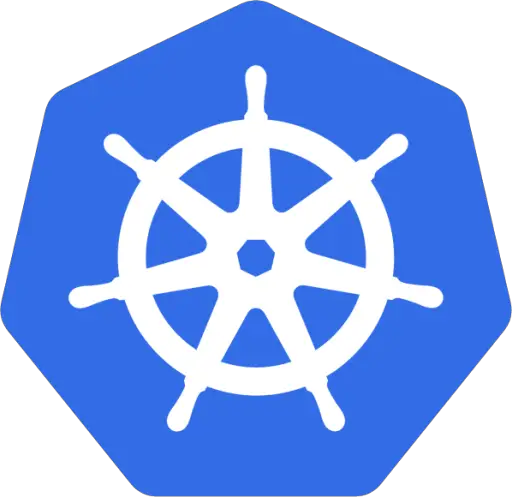Introduction
As web applications become more complex and user demand grows, scalability becomes a critical concern for developers and DevOps teams. Docker and Kubernetes have emerged as powerful tools to build, deploy, and manage scalable web applications efficiently. Docker simplifies the process of packaging applications into lightweight containers, while Kubernetes orchestrates these containers to ensure they run smoothly across different environments.
In this article, we’ll explore how to leverage Docker and Kubernetes to build scalable web applications in 2024. We’ll cover practical steps, best practices, and advanced strategies to ensure your applications can handle increased traffic and provide a seamless user experience.
1. Understanding the Basics of Docker and Kubernetes
Before diving into the practical steps, it’s essential to understand what Docker and Kubernetes are and how they work together to achieve scalability.
- What is Docker?
Docker is a platform that enables developers to create, deploy, and run applications in containers—lightweight, standalone packages that include everything needed to run the application (code, runtime, libraries, etc.). Docker ensures consistency across multiple environments, from development to production. - What is Kubernetes?
Kubernetes is a container orchestration platform that automates deploying, scaling, and managing containerized applications. It provides tools to manage clusters of Docker containers, ensuring high availability, load balancing, and efficient resource utilization.
2. Setting Up Your Development Environment
To get started with Docker and Kubernetes, you’ll need to set up your development environment.
- Install Docker:
- Download and install Docker Desktop for your operating system (Windows, macOS, Linux) from the Docker website.
- Verify the installation by running
docker --versionin your terminal.
- Install Kubernetes:
- Docker Desktop includes a built-in Kubernetes environment. Alternatively, install Minikube for a lightweight local Kubernetes setup.
- Verify the installation by running
kubectl versionin your terminal.
- Install Kubernetes CLI (kubectl):
- The Kubernetes command-line tool (kubectl) allows you to run commands against Kubernetes clusters. Download and install it from the Kubernetes website.
3. Containerizing Your Web Application with Docker
Dockerizing your web application is the first step towards achieving scalability. Here’s how you can create a Docker container for a typical web application.
Step-by-Step Guide to Dockerizing Your Application:
Create a Dockerfile: A Dockerfile is a text document that contains all the commands to assemble a Docker image. Here’s an example for a Node.js application:
# Use the official Node.js image as the base image
FROM node:14
# Set the working directory
WORKDIR /usr/src/app
# Copy package.json and install dependencies
COPY package*.json ./
RUN npm install
# Copy the application code
COPY . .
# Expose the application port
EXPOSE 3000
# Start the application
CMD ["npm", "start"]Build the Docker Image: Run the following command in the directory containing your Dockerfile:
docker build -t your-app-name .
Run the Docker Container: Run the Docker container using:
docker run -p 3000:3000 your-app-name
4. Deploying and Scaling Your Application with Kubernetes
Once your application is containerized, Kubernetes will help you manage and scale it across multiple environments.
- Deploying Your Dockerized Application to Kubernetes:
Create a Kubernetes Deployment: A Deployment defines the desired state for your application, including the number of replicas, the Docker image to use, and the environment variables.
apiVersion: apps/v1
kind: Deployment
metadata:
name: my-app
spec:
replicas: 3
selector:
matchLabels:
app: my-app
template:
metadata:
labels:
app: my-app
spec:
containers:
- name: my-app
image: your-app-name:latest
ports:
- containerPort: 3000Apply the Deployment: Use kubectl to apply the deployment:
kubectl apply -f deployment.yamlExpose Your Deployment: Create a Service to expose your Deployment, making it accessible from the internet:
apiVersion: v1
kind: Service
metadata:
name: my-app-service
spec:
type: LoadBalancer
selector:
app: my-app
ports:
- protocol: TCP
port: 80
targetPort: 3000Apply the Service: Use kubectl to apply the service:
kubectl apply -f service.yaml
- Unique Insight:
Use Kubernetes Horizontal Pod Autoscaler (HPA) to automatically scale the number of pods in your deployment based on CPU or memory usage.
5. Best Practices for Using Docker and Kubernetes
To maximize the benefits of Docker and Kubernetes, follow these best practices:
- Optimize Your Docker Images:
- Use smaller base images like Alpine Linux to reduce image size.
- Regularly update images to patch vulnerabilities and keep dependencies up-to-date.
- Use multi-stage builds to minimize the size of the final image.
- Implement Kubernetes Monitoring and Logging:
- Use tools like Prometheus and Grafana for monitoring and visualizing metrics.
- Implement ELK Stack (Elasticsearch, Logstash, Kibana) for centralized logging.
- Manage Secrets and Configurations Securely:
- Use Kubernetes Secrets to store sensitive data, such as API keys and passwords.
- Use ConfigMaps to manage application configurations separately from the codebase.
- Leverage Helm Charts for Reusable Deployments:
- Use Helm to define, install, and upgrade Kubernetes applications. Helm charts make your deployments reproducible and easier to manage.
6. Advanced Strategies for Scaling Web Applications
To ensure your web applications are scalable and resilient, consider implementing these advanced strategies:
- Use Service Mesh for Microservices:
- Implement a service mesh like Istio or Linkerd to manage microservices communication, traffic routing, security, and observability.
- Implement Blue-Green Deployments:
- Use blue-green deployment strategies to minimize downtime during updates by running two identical production environments—one live (blue) and one idle (green).
- Enable Autoscaling and Load Balancing:
- Configure Horizontal Pod Autoscaler (HPA) to dynamically scale applications based on real-time demand.
- Use Kubernetes Ingress Controllers to manage external access and balance loads efficiently.
Conclusion
Docker and Kubernetes are essential tools for building scalable web applications in 2024. By containerizing your applications with Docker and orchestrating them with Kubernetes, you can achieve greater scalability, reliability, and efficiency. Following best practices and implementing advanced strategies will help you optimize your deployments and ensure your web applications can handle increased traffic and provide a seamless user experience.
Are you using Docker and Kubernetes for your web applications? Share your insights and experiences in the comments below, and subscribe to our newsletter for more DevOps tips and tools!

Leave a Reply